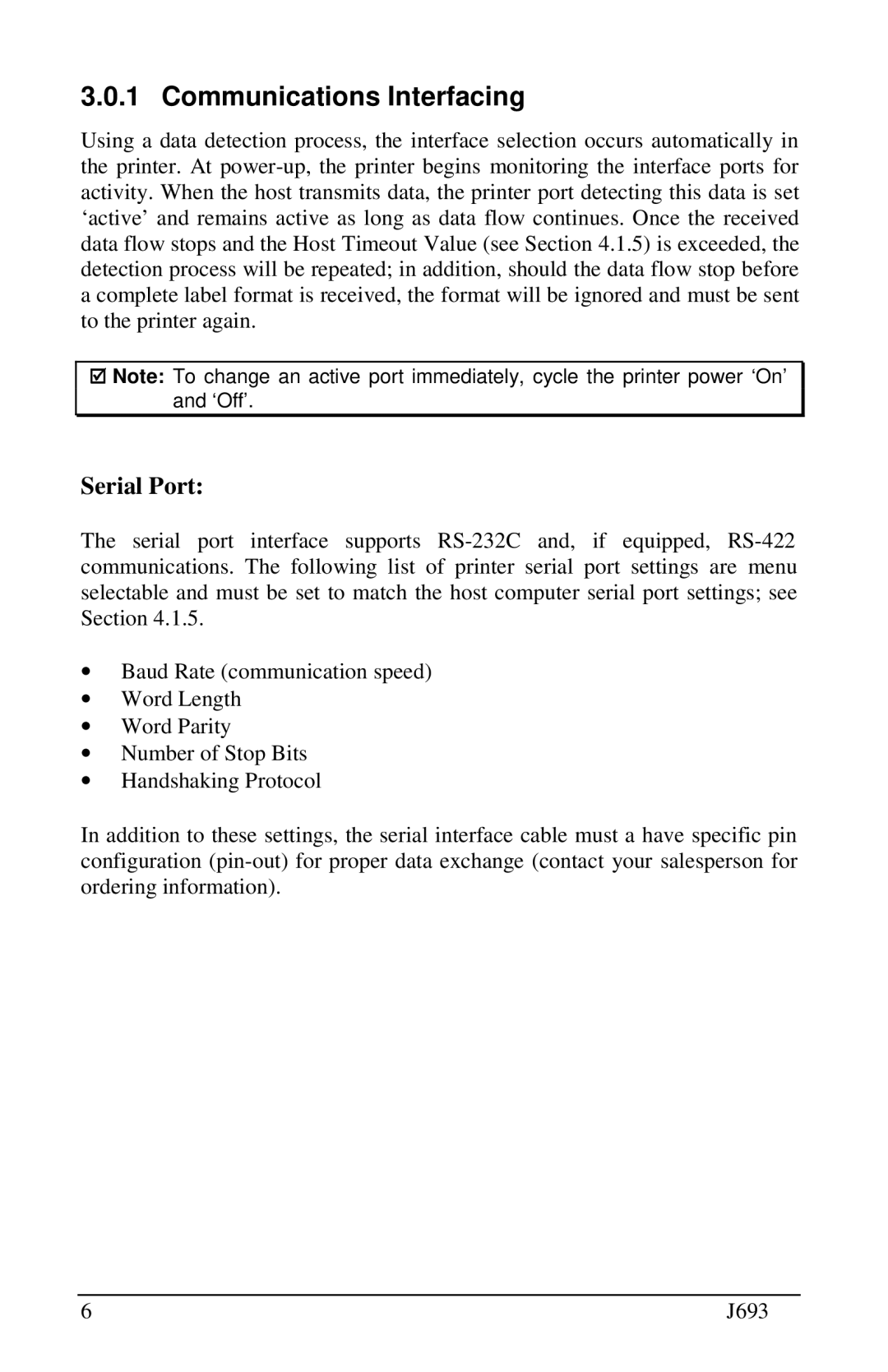3.0.1 Communications Interfacing
Using a data detection process, the interface selection occurs automatically in the printer. At power-up, the printer begins monitoring the interface ports for activity. When the host transmits data, the printer port detecting this data is set ‘active’ and remains active as long as data flow continues. Once the received data flow stops and the Host Timeout Value (see Section 4.1.5) is exceeded, the detection process will be repeated; in addition, should the data flow stop before a complete label format is received, the format will be ignored and must be sent to the printer again.
Note: To change an active port immediately, cycle the printer power ‘On’ and ‘Off’.
Serial Port:
The serial port interface supports RS-232C and, if equipped, RS-422 communications. The following list of printer serial port settings are menu selectable and must be set to match the host computer serial port settings; see Section 4.1.5.
∙Baud Rate (communication speed)
∙Word Length
∙Word Parity
∙Number of Stop Bits
∙Handshaking Protocol
In addition to these settings, the serial interface cable must a have specific pin configuration (pin-out) for proper data exchange (contact your salesperson for ordering information).

